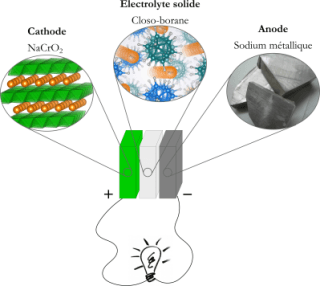Nov 24 2017
Laptops, phones, electric cars – batteries are used everywhere. Batteries are more powerful, lighter and designed to last longer in order to meet the expectations of today’s consumers.
Currently, the most vital technology for these applications is the lithium-ion battery technology: however, the technology is expensive and comprises of a flammable liquid, which may represent a safety hazard, when the battery is abused. In order to satisfy the growing demand from developing markets (electric cars, for instance, and renewable energy storage), researchers from Empa, the Swiss Federal Laboratories for Materials Science and Technology, and the University of Geneva (UNIGE), Switzerland, have engineered a new battery prototype: called “all-solid-state”. The battery is capable of storing more energy while maintaining high reliability and safety levels. Additionally, the battery is based on sodium, a cost-effective alternative to lithium. More details about the research can be obtained from the journal Energy and Environmental Science.
 Composition of the solid sodium battery. © Empa
Composition of the solid sodium battery. © Empa
For a battery to work, it is essential for it to have the following three main components: an anode (the negative pole), an electrolyte and a cathode (the positive pole). Most of the batteries employed in electronic equipment are based on lithium ions. When the battery charges, the lithium ions leave the cathode and then move to the anode. In order to prevent lithium dendrites forming – a type of microscopic stalagmite that can induce short circuits in the battery that could cause fire – the anode in commercial batteries is developed from graphite rather than metallic lithium, despite the fact that this ultra-light metal would increase the amount of energy capable of being stored.
The UNIGE and Empa researchers focused on the benefits of a “solid” battery in order to cope with the heightened demand from growing markets and to make batteries with even better performance: faster charging coupled with increased storage capacity and enhanced safety. Their battery uses a solid instead of a liquid electrolyte that enables the use of a metal anode by blocking the formation of dendrites, bringing about the possibility to store more energy while ensuring safety.
A non-flammable solid sodium battery
“But we still had to find a suitable solid ionic conductor that, as well as being non-toxic, was chemically and thermally stable, and that would allow the sodium to move easily between the anode and the cathode,” explains Hans Hagemann, professor in the Physical Chemistry Department in UNIGE’s Faculty of Sciences. The researchers found that a boron-based substance, a closo-borane, allowed the sodium ions to freely circulate. Additionally, since the closo-borane is an inorganic conductor, it eradicates the risk of the battery catching fire while recharging. In other words, it is a material with a number of promising properties.
“The difficulty was establishing close contact between the battery’s three layers: the anode, consisting of solid metallic sodium; the cathode, a mixed sodium chromium oxide; and the electrolyte, the closo-borane,” states Léo Duchêne, a researcher at Empa’s Materials for Energy Conversion Laboratory and a PhD student in the Department of Physical Chemistry at UNIGE’s Faculty of Science. The researchers dissolved a portion of the battery electrolyte in a solvent prior to adding the sodium chromium oxide powder. After the solvent evaporated, they stacked the cathode powder composite with the anode and electrolyte, compressing the different layers to produce the battery.
Researchers at Empa and UNIGE successively tested the battery. “The electro-chemical stability of the electrolyte we are using here can withstand three volts, whereas many solid electrolytes previously studied are damaged at the same voltage,” says Arndt Remhof, a researcher at Empa and leader of the project, which is supported by the Swiss National Science Foundation (SNSF) and the Swiss Competence Centre for Energy Research on Heat and Electricity Storage (SCCER-HaE). The scientists succeeded in testing the battery over 250 charge and discharge cycles, after which 85% of the energy capacity continued to be functional. “But it needs 1,200 cycles before the battery can be put on the market”, say the researchers. “In addition, we still have to test the battery at room temperature so we can confirm whether or not dendrites form, while increasing the voltage even more. Our experiments are still ongoing.”